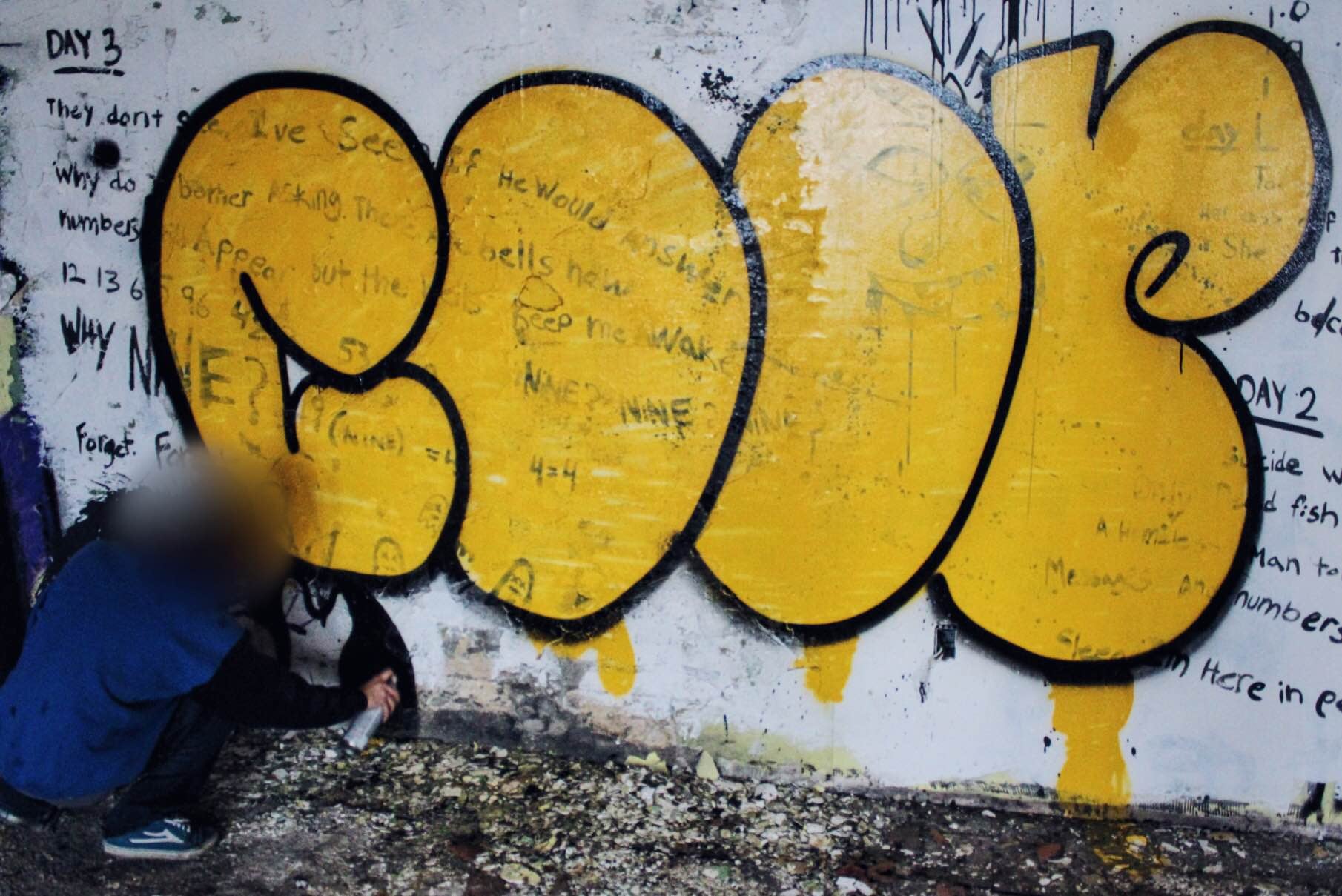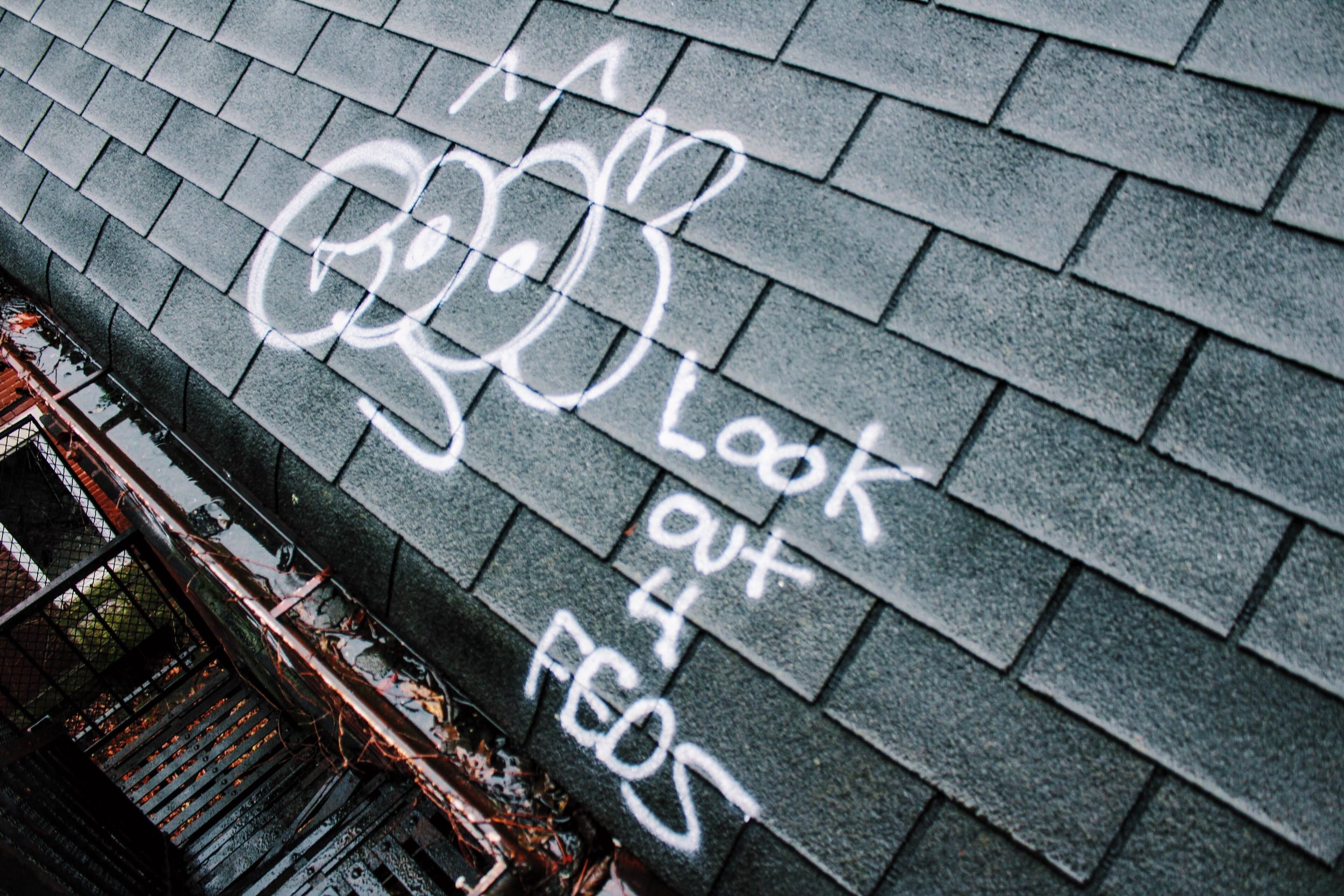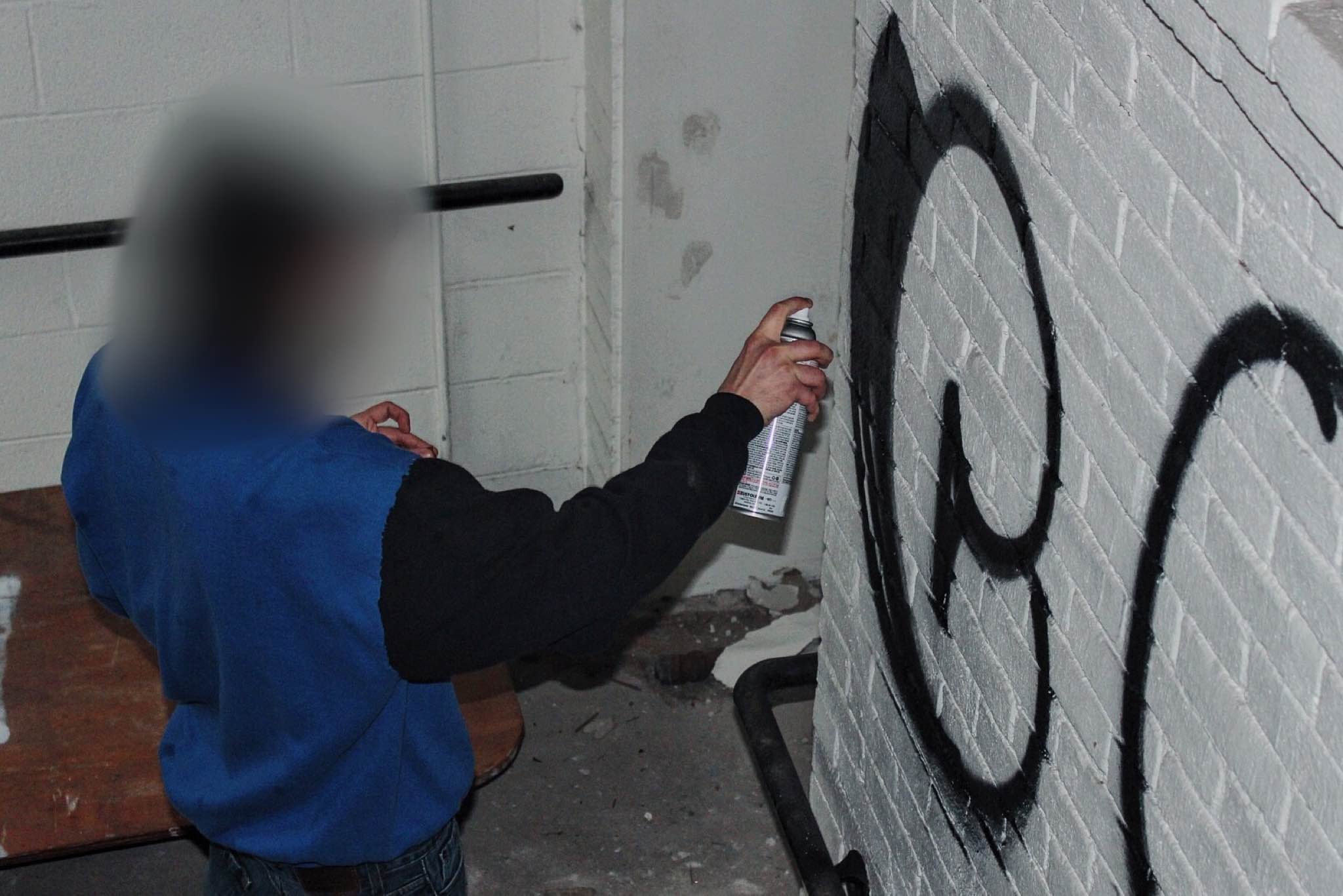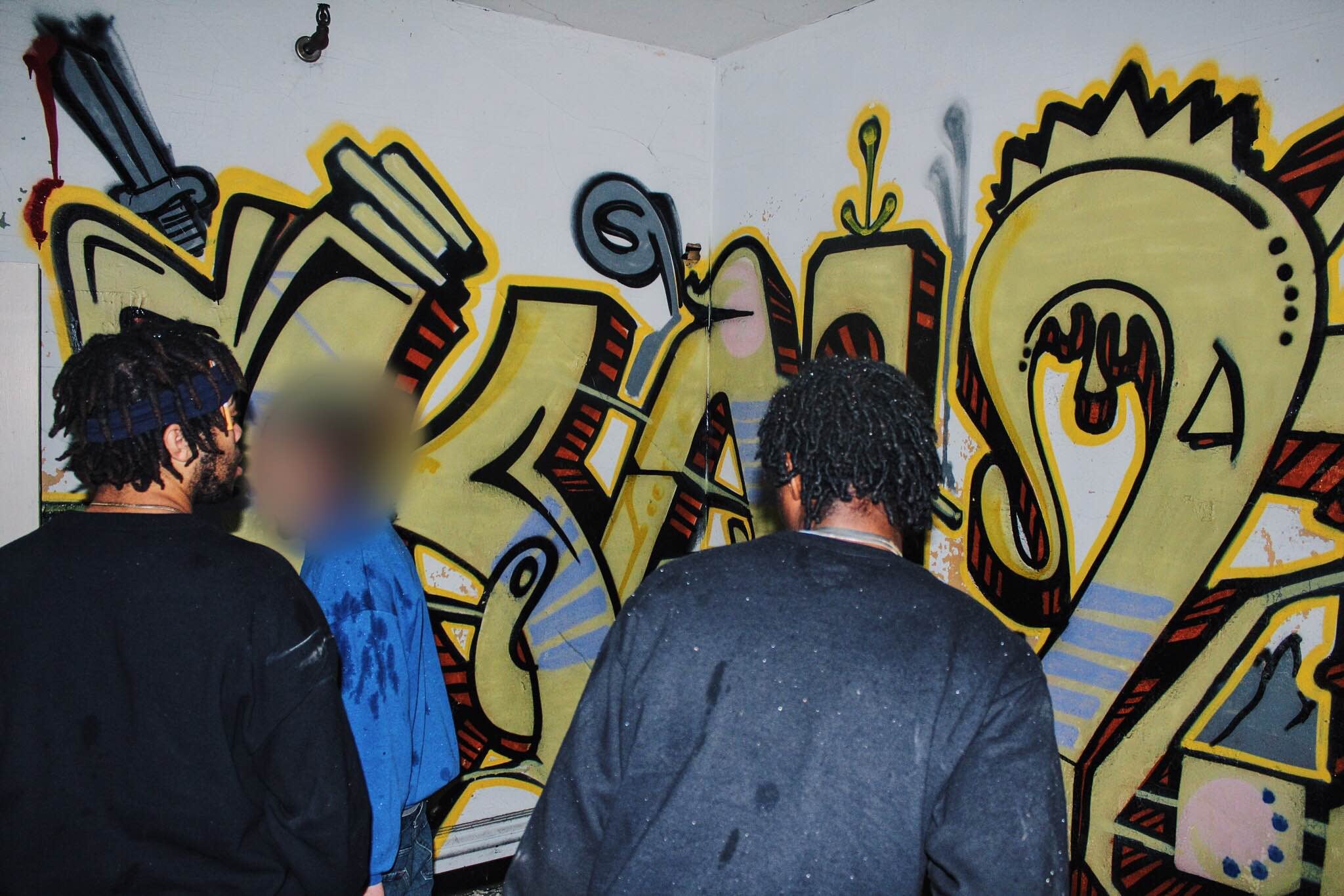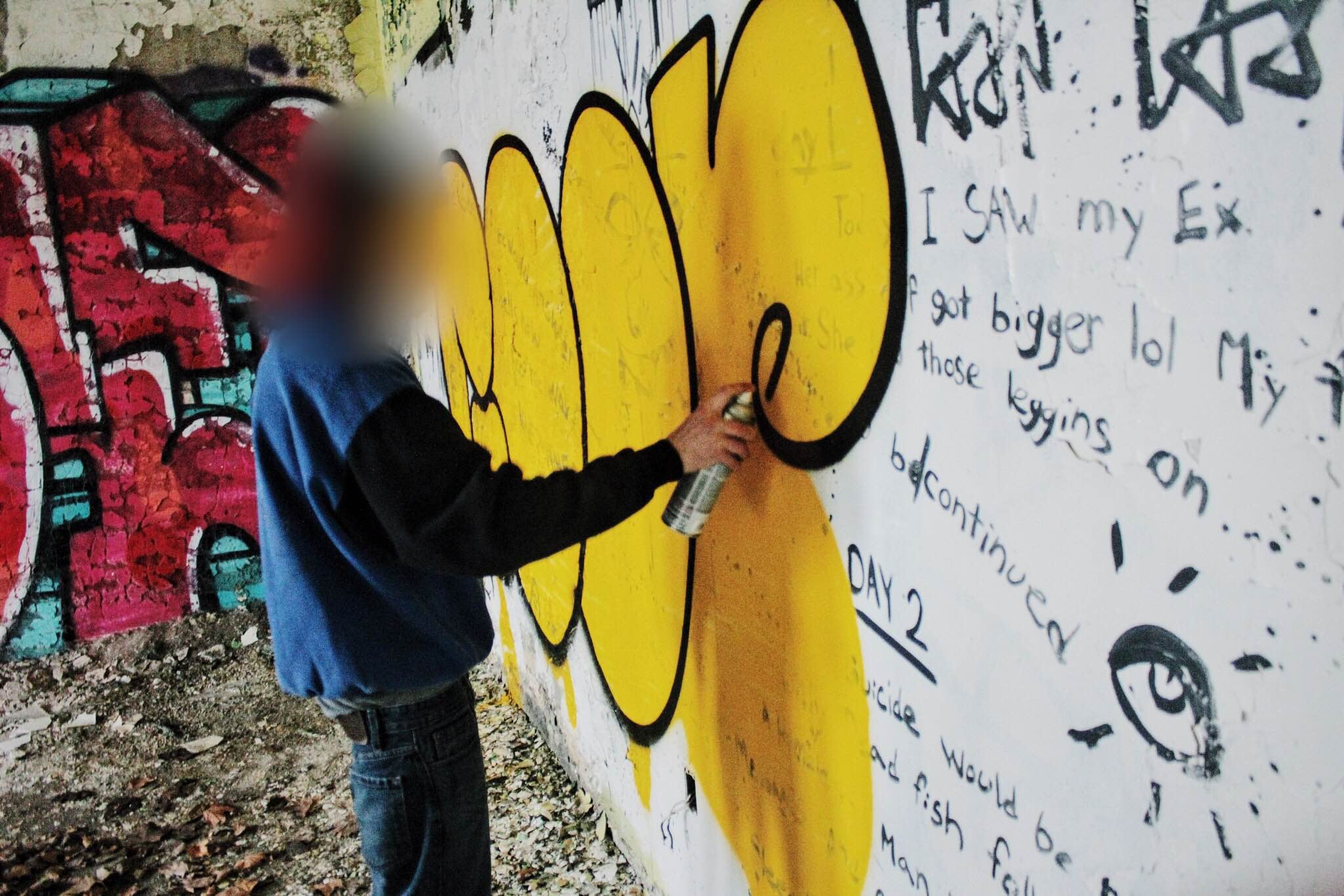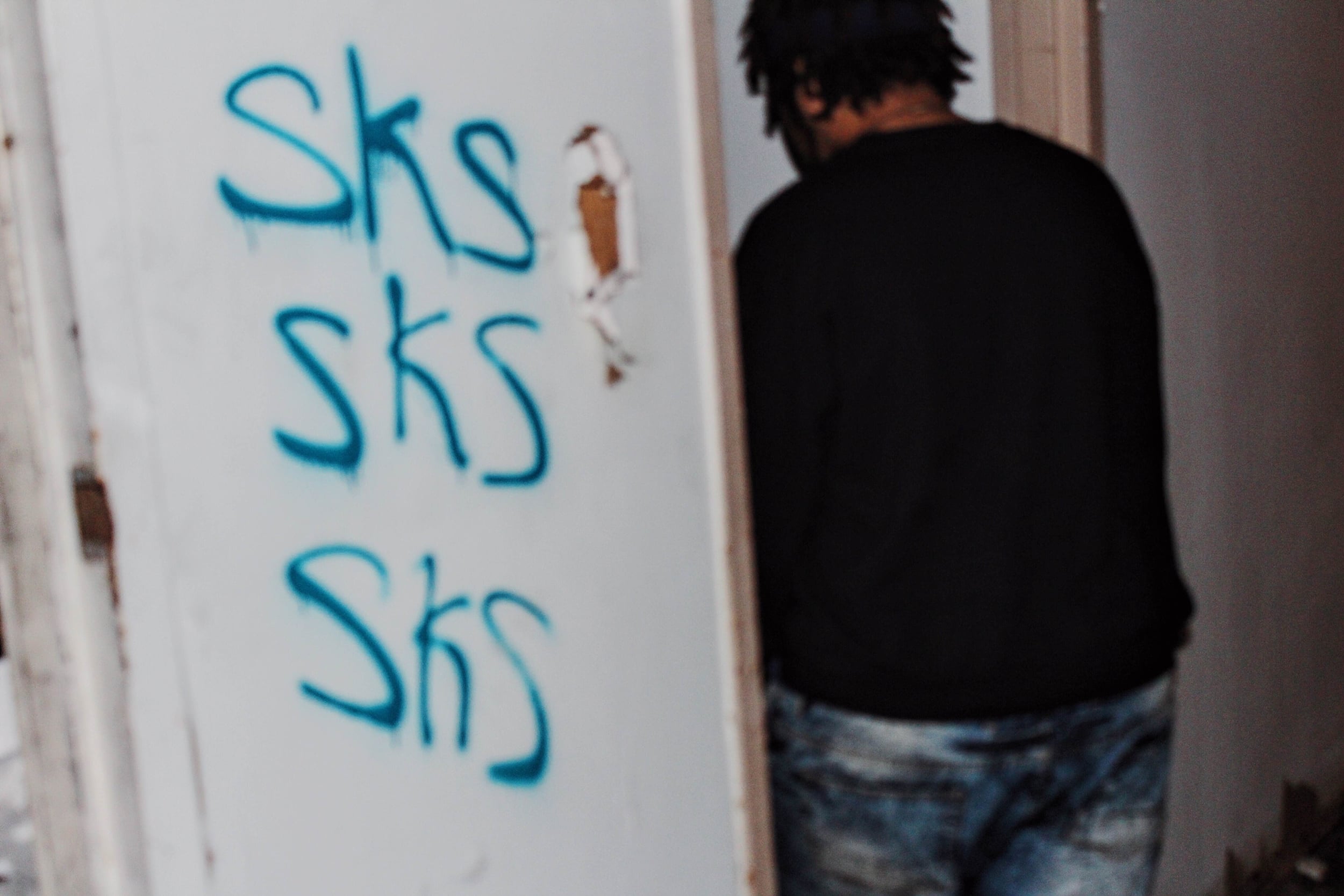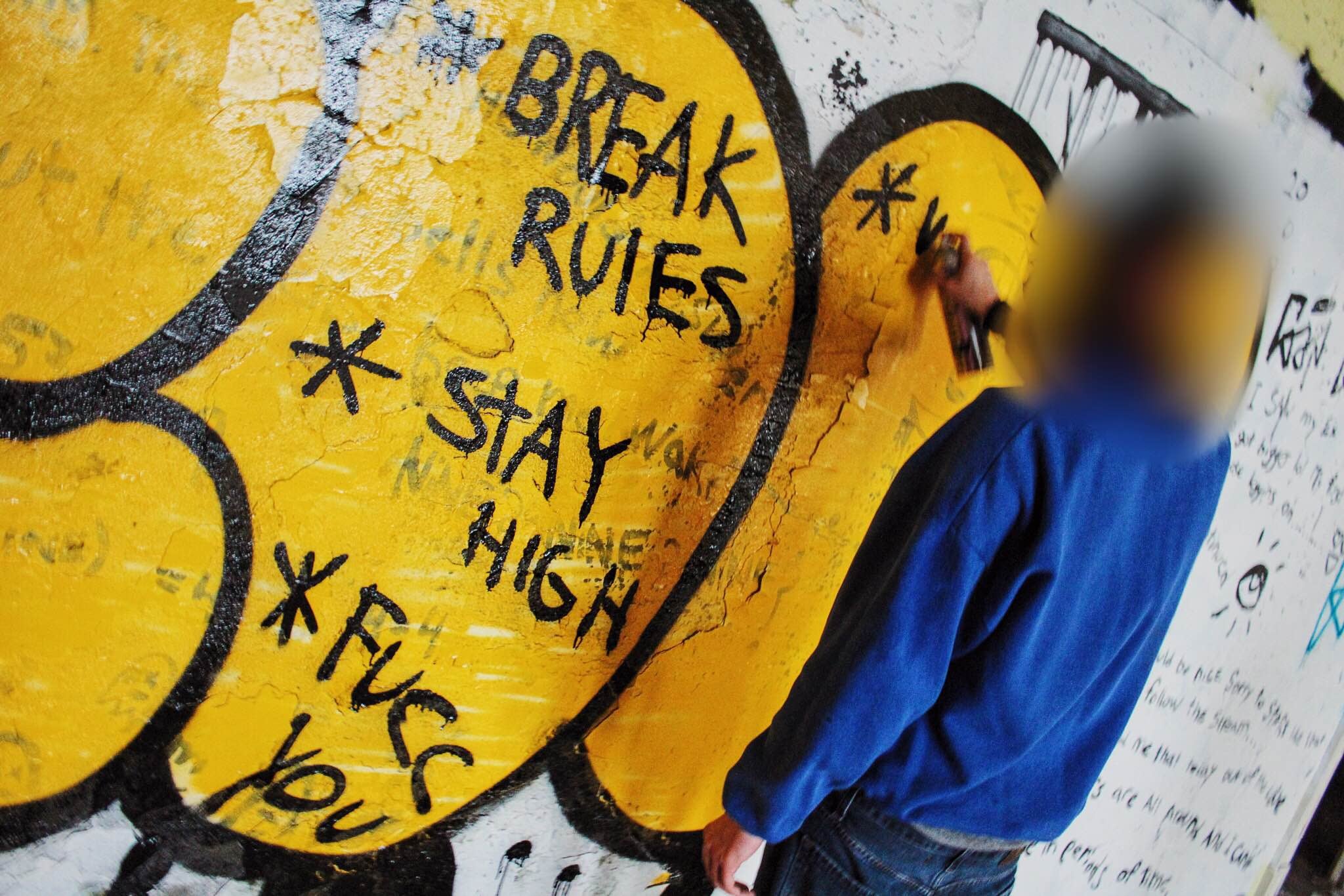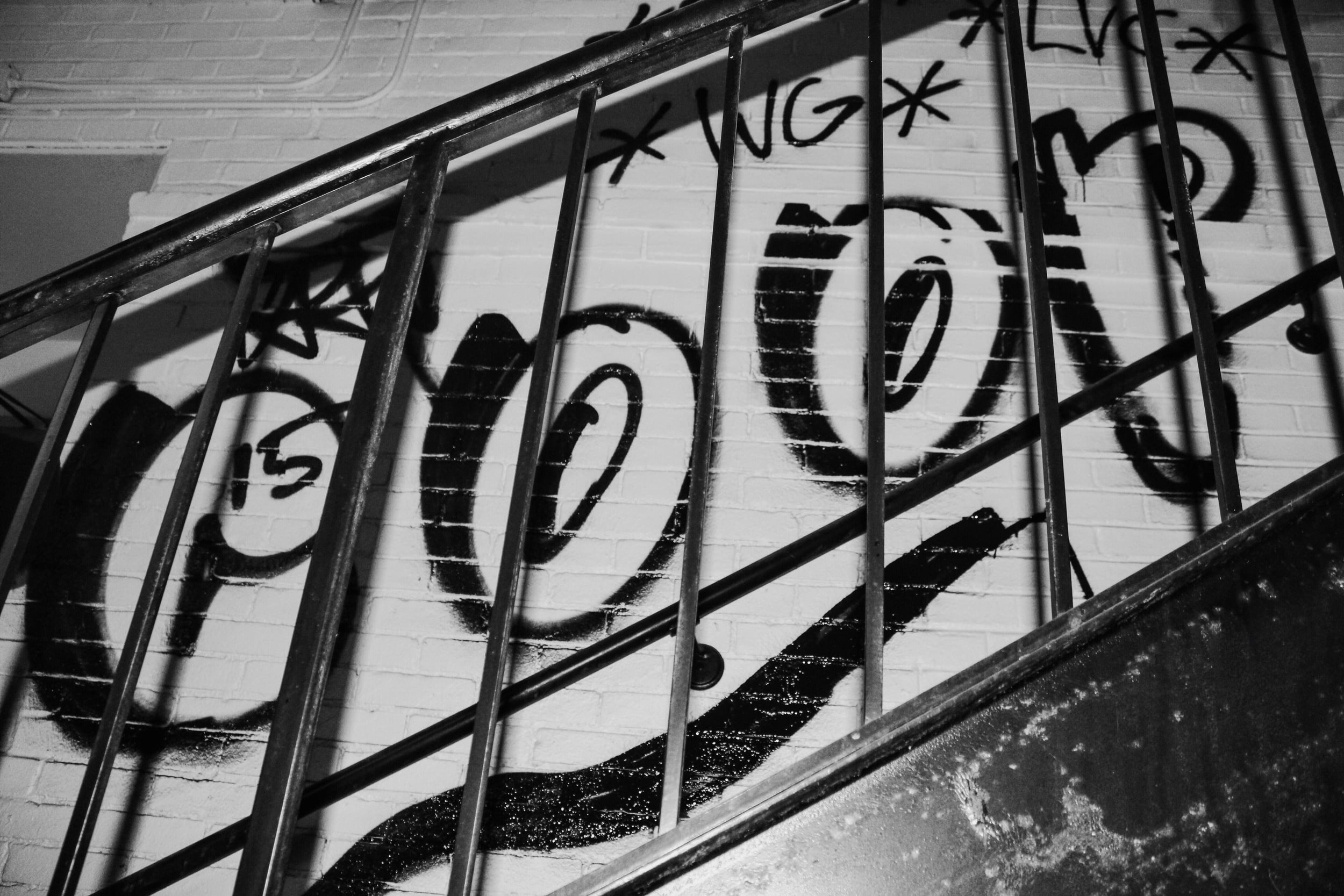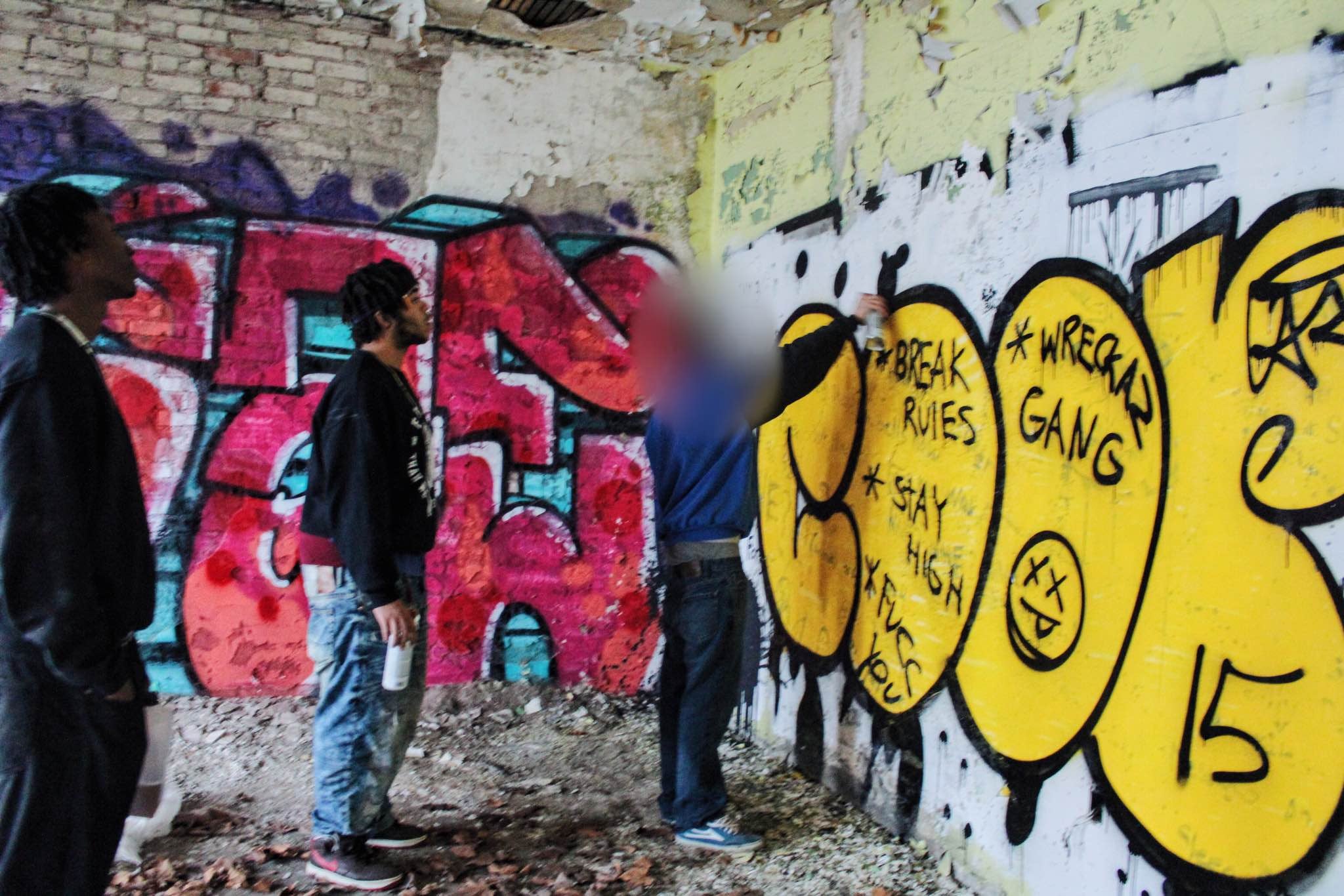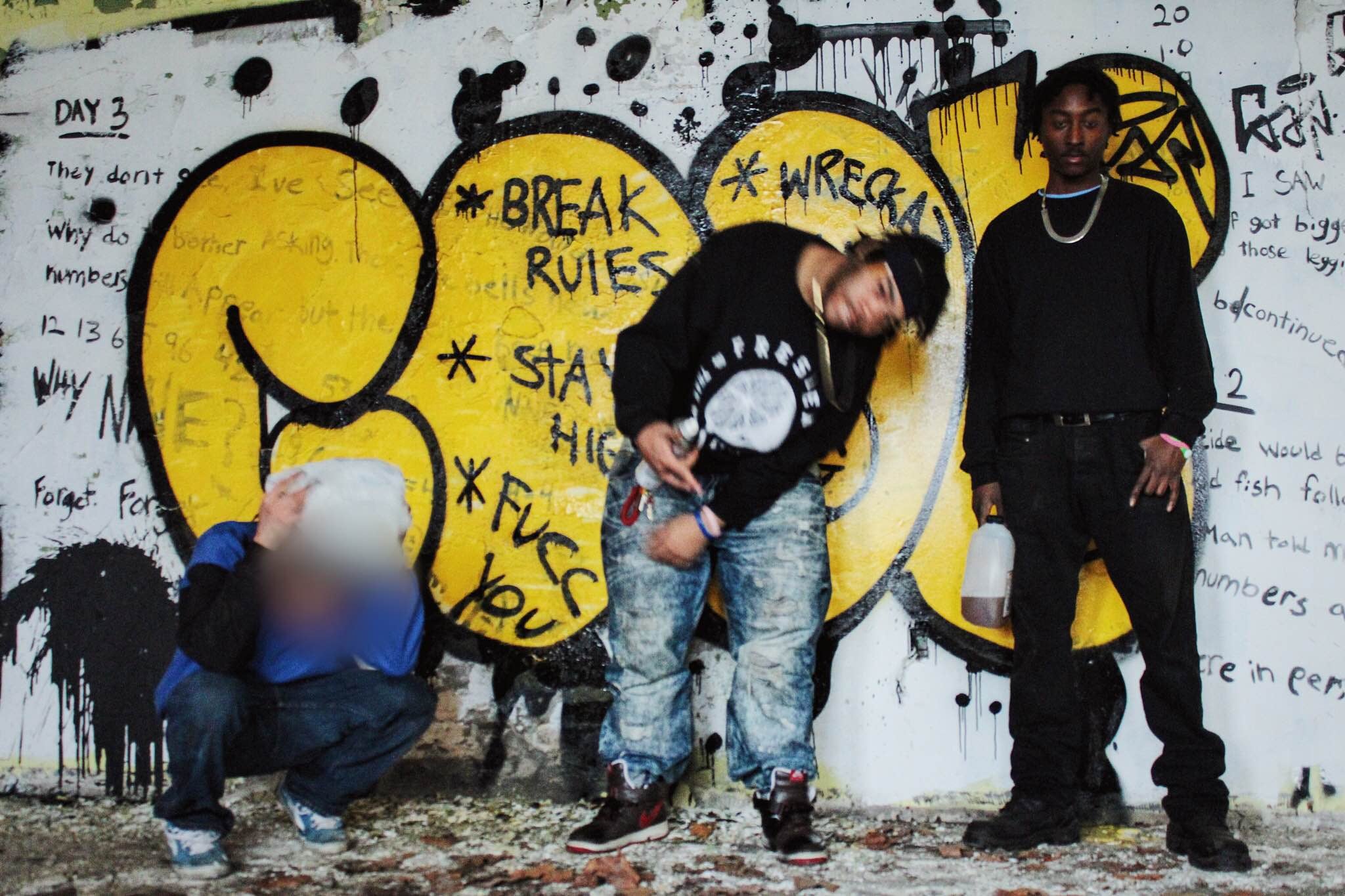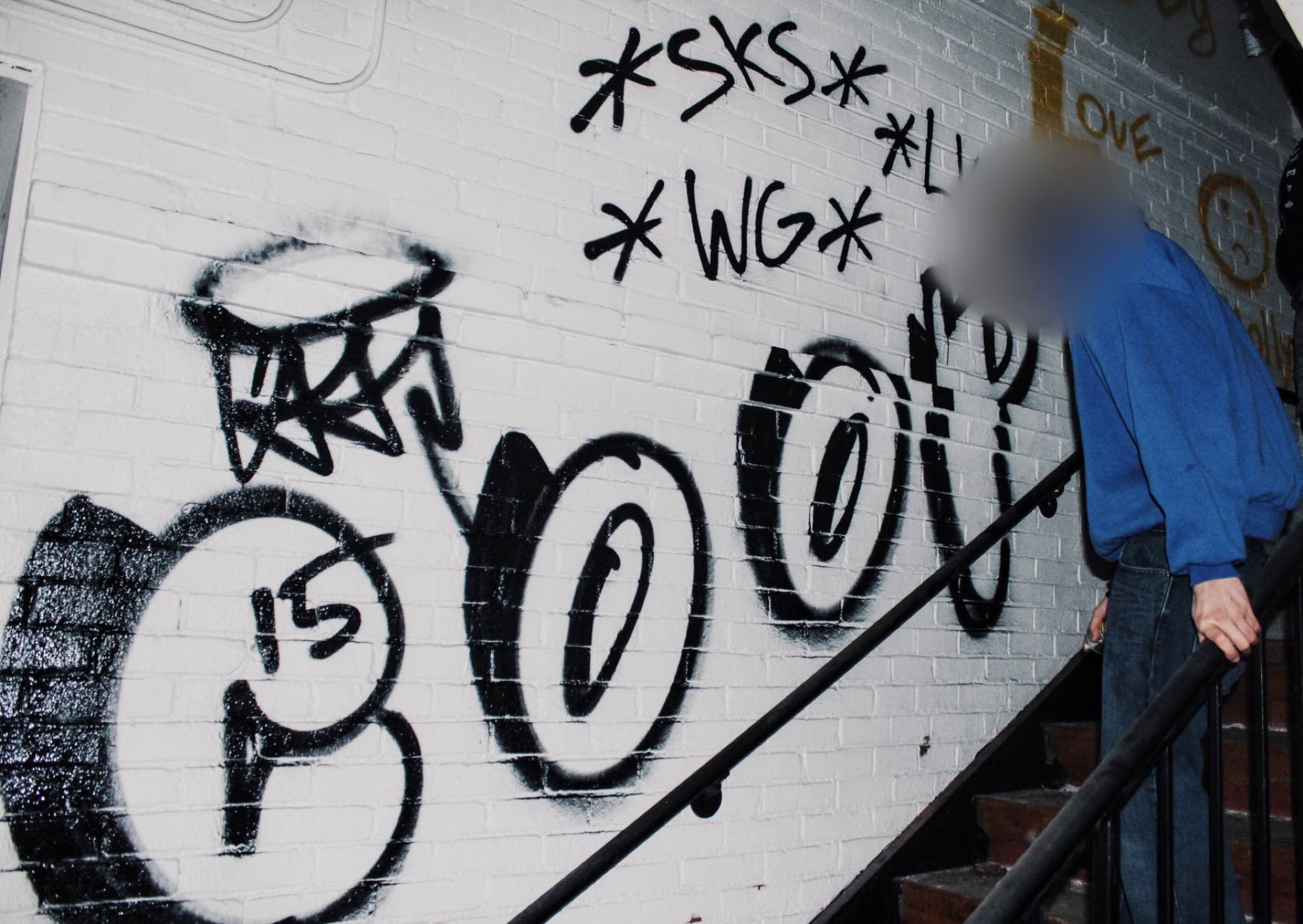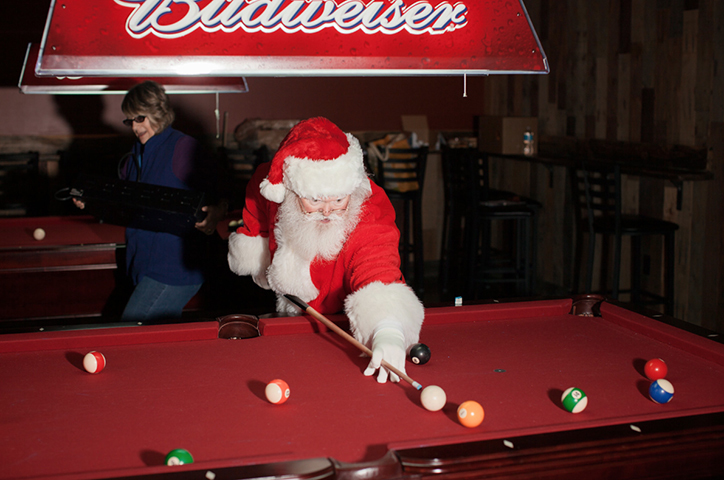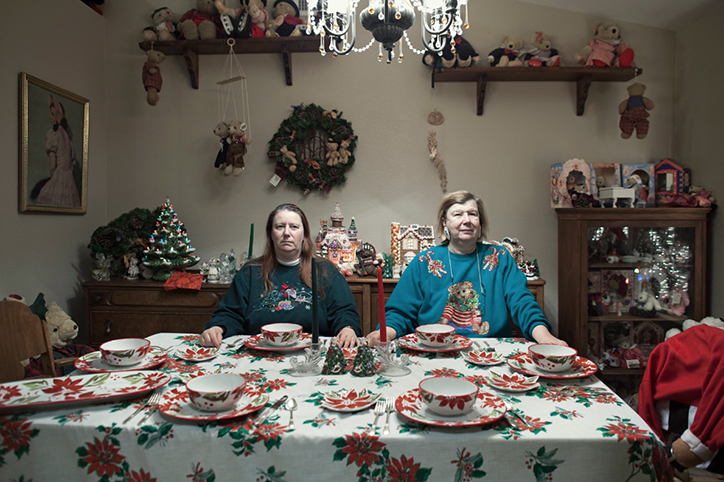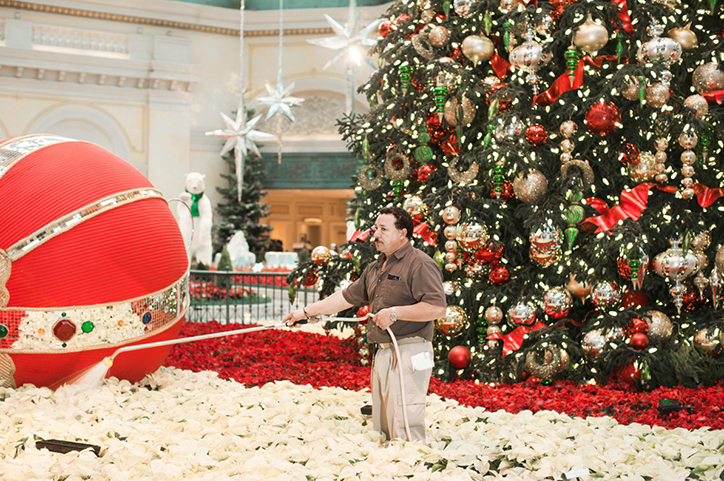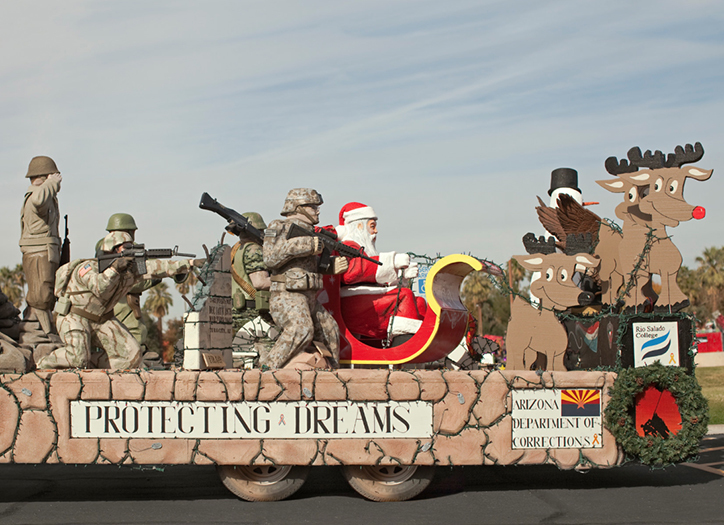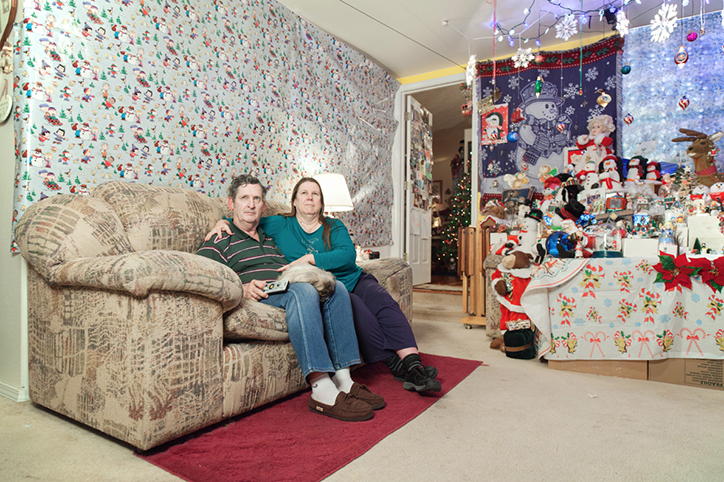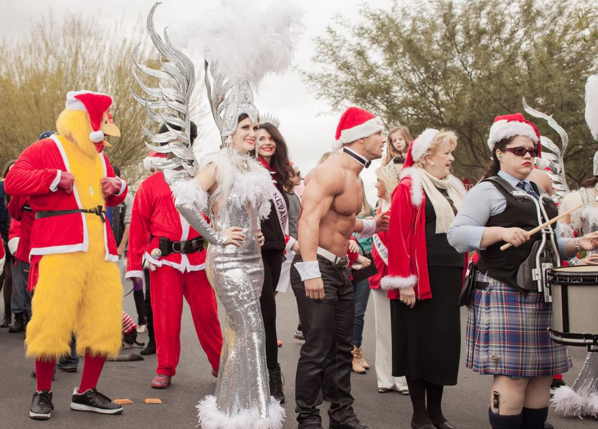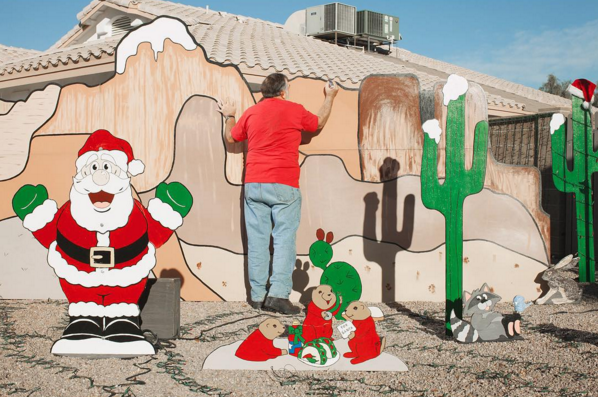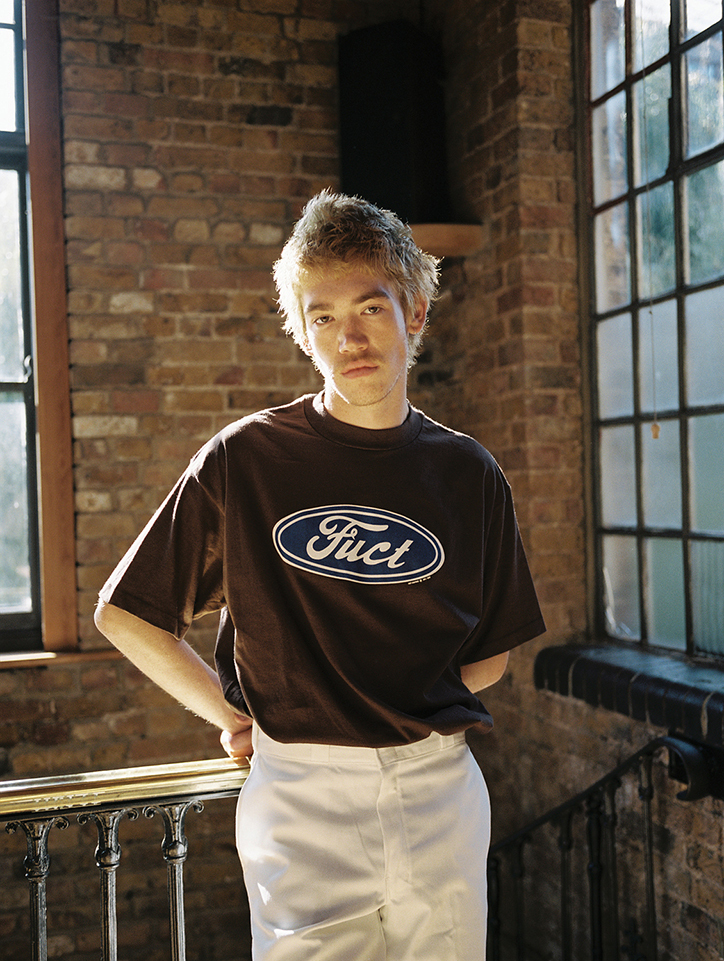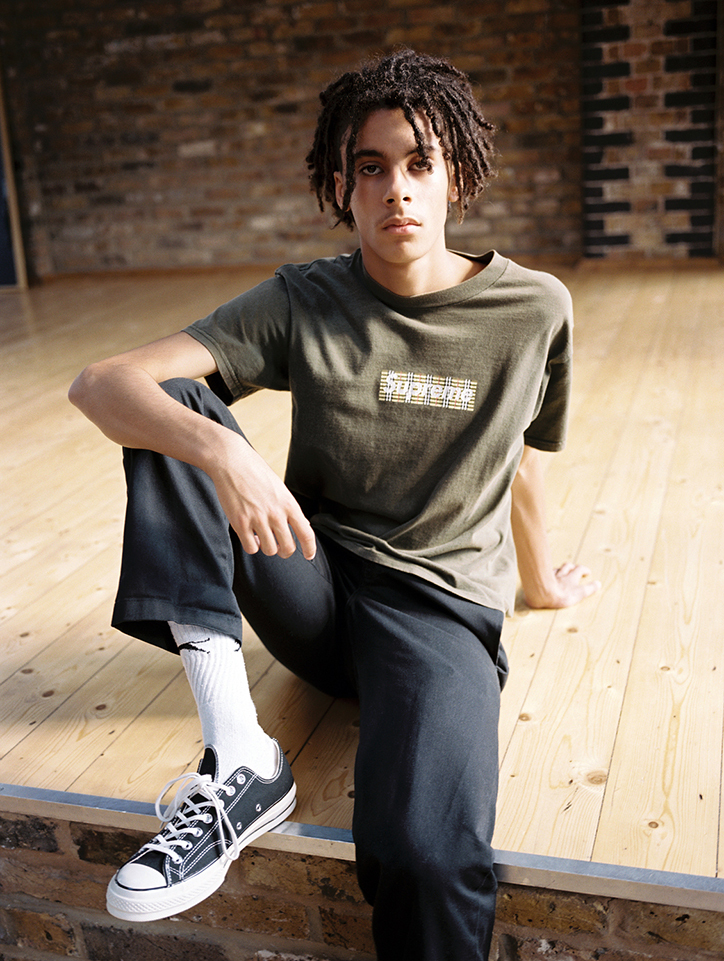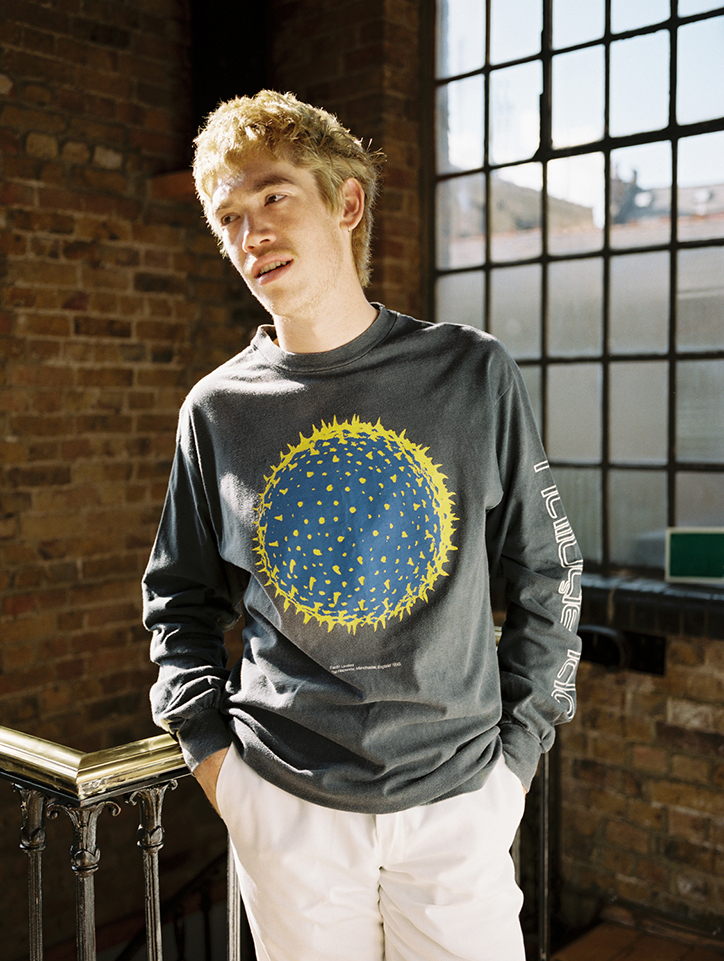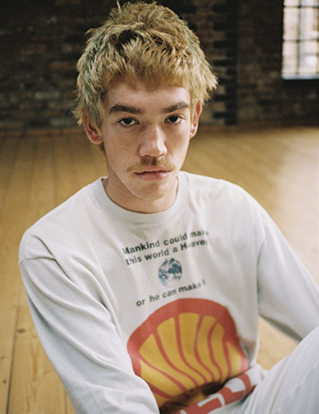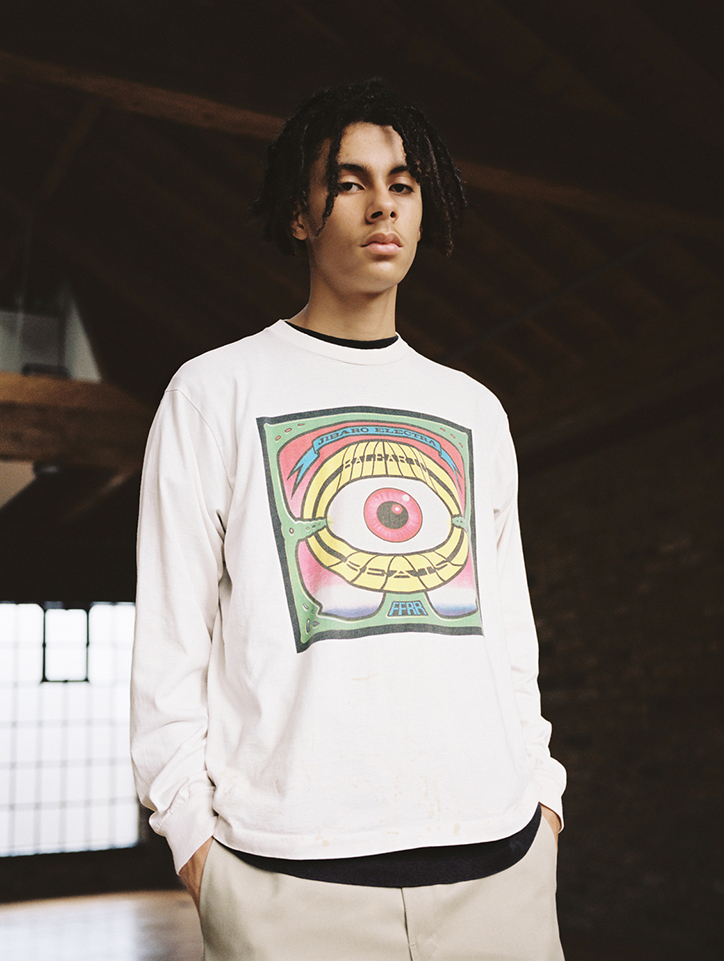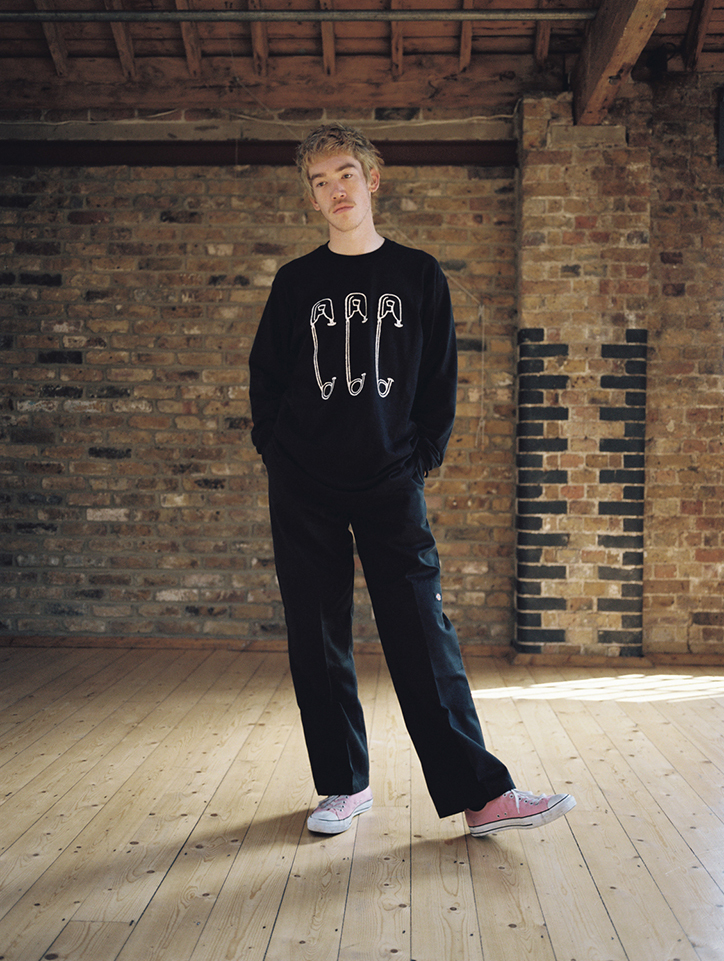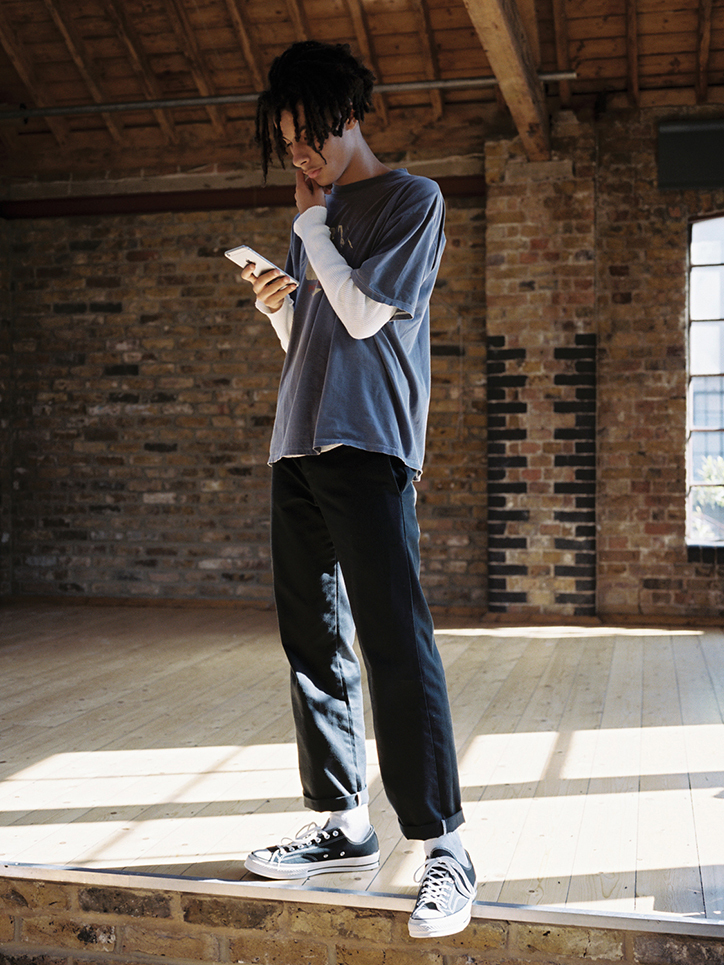COOP and Wreckaz Gang affiliate Kyle spray paint railcars stopped in Swissvale
COOP, one of Pittsburgh's resident graffiti artists, immerses himself in graffiti wonderland. An adrenaline rush overcomes him after successfully tagging billboards, railroad cars, and public wall space visible to masses of people.
Graffiti is criminal when people spray on public and private property they do not own or have permission to use.
COOP acknowledges the legality of graffiti, and it makes him wary. However, when the adrenaline high hits him, he wants to write his tag and throw up more frequently and in more places across Pittsburgh. COOP is captivated by the exploration and boastfulness of the creative expression.
The artist participates in a risky business where each outing could be his last. Nosey neighbors, property owners, and police could happen upon COOP's process at any moment and arrest him for his second time.
One occasion COOP tagged a staircase viewable in Pittsburgh's Greenfield-Squirrel Hill neighborhood. When he finished I told him, "Do not push the limits, you already hit one spot today. The longer you go, the greater chance you have of getting caught." COOP was attentive to what I said, but he played the odds and tagged a billboard hanging over the highway, as well as bridge dividers and trash can covers.
COOP's throw up along a staircase in Greenfield-Squirrel Hill
Eventually, I convinced him to call the day a wrap. On the way back to basecamp, I stopped at the Speedway gas station on Browns Hill Road to refuel. There I saw COOP exit my Nissan Juke with a can of spray paint and walk up Beechwood Boulevard's incline. I could not go after him because the gas pump remained in my car. I hoped whatever he was doing he would be discrete, work quickly, and return. I finished at the gas pump and waited for COOP. Not long thereafter he came sprinting to my parked car. "We gotta whip out, we gotta whip out," he said. "Why, why," I asked. "Because some old man saw me and asked me what I was doing, so I told him to fuck off," he said.
I pulled out of the parking lot and headed across the High Level Bridge towards the Waterfront. "Are you kidding me," COOP said as he looked into the rearview mirror. The old man he told to fuck off was now following my Juke in a gold Honda Pilot. I was shocked the man tracked COOP into my car and was swift enough to trail my vehicle. I understood, however, why his anger motivated him to chase us through the Waterfront and record the low-speed chase with his iPhone.
The man acted like a vigilante and hunted COOP for his disruptive, criminal, and damaging behavior that displayed a lack of respect. For some people, when they notice graffiti markings on the street they see negatives, and not the creativity, pride, and artist that drives the craft.
Recently, on Jan. 23, COOP, myself, and Wreckaz Gang duo Kyle and Kyle had a run in with police due to our suspicious activity near a train of railcars stopped on the tracks in Swissvale. The situation was pretty uneventful, and nothing happened other then two of us discovering a police cruiser posted next to my car in a park's snowy parking lot. COOP ditched his paint before the copper saw anything and at the sight of my camera, he drove off with a nod and smirk.
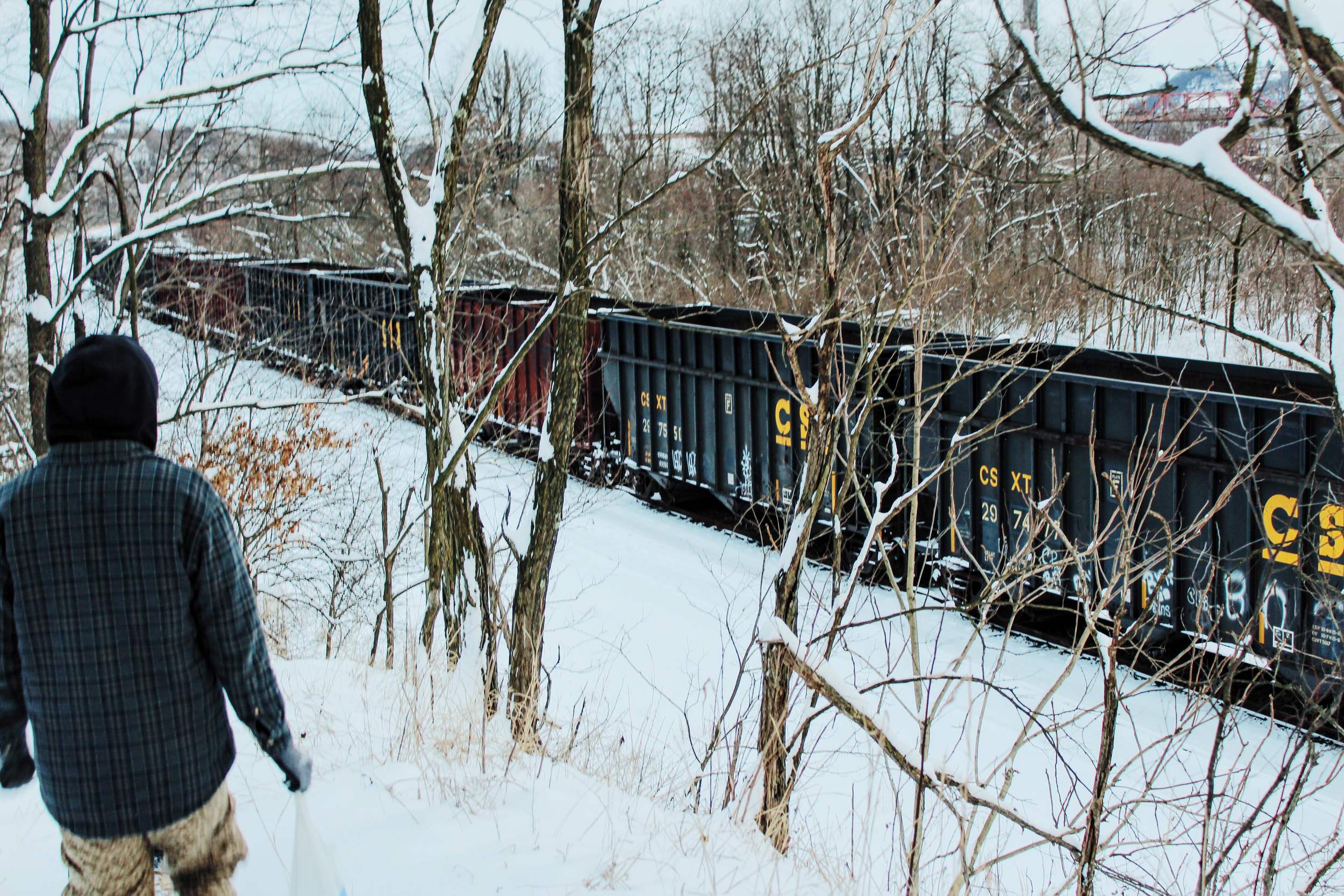
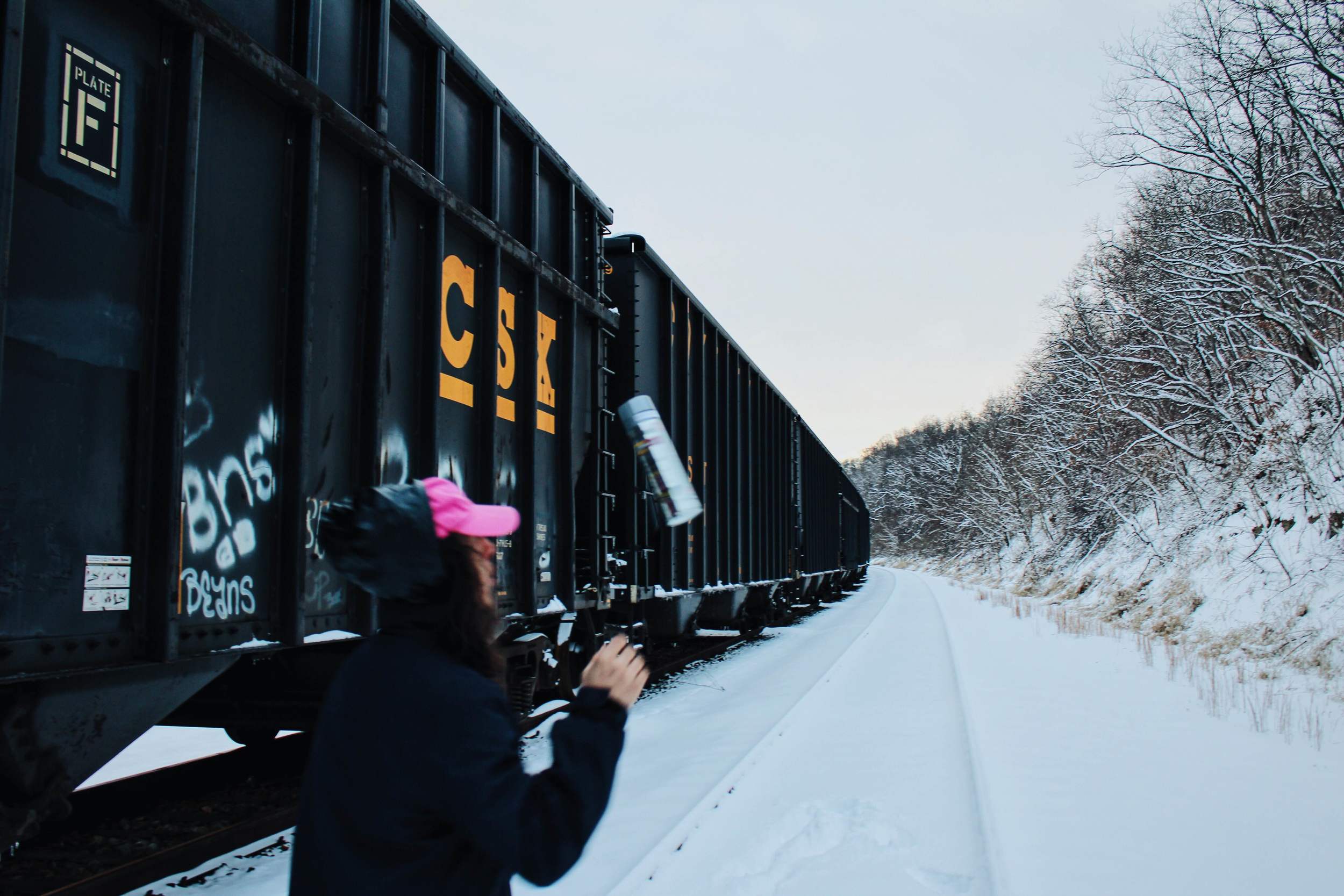
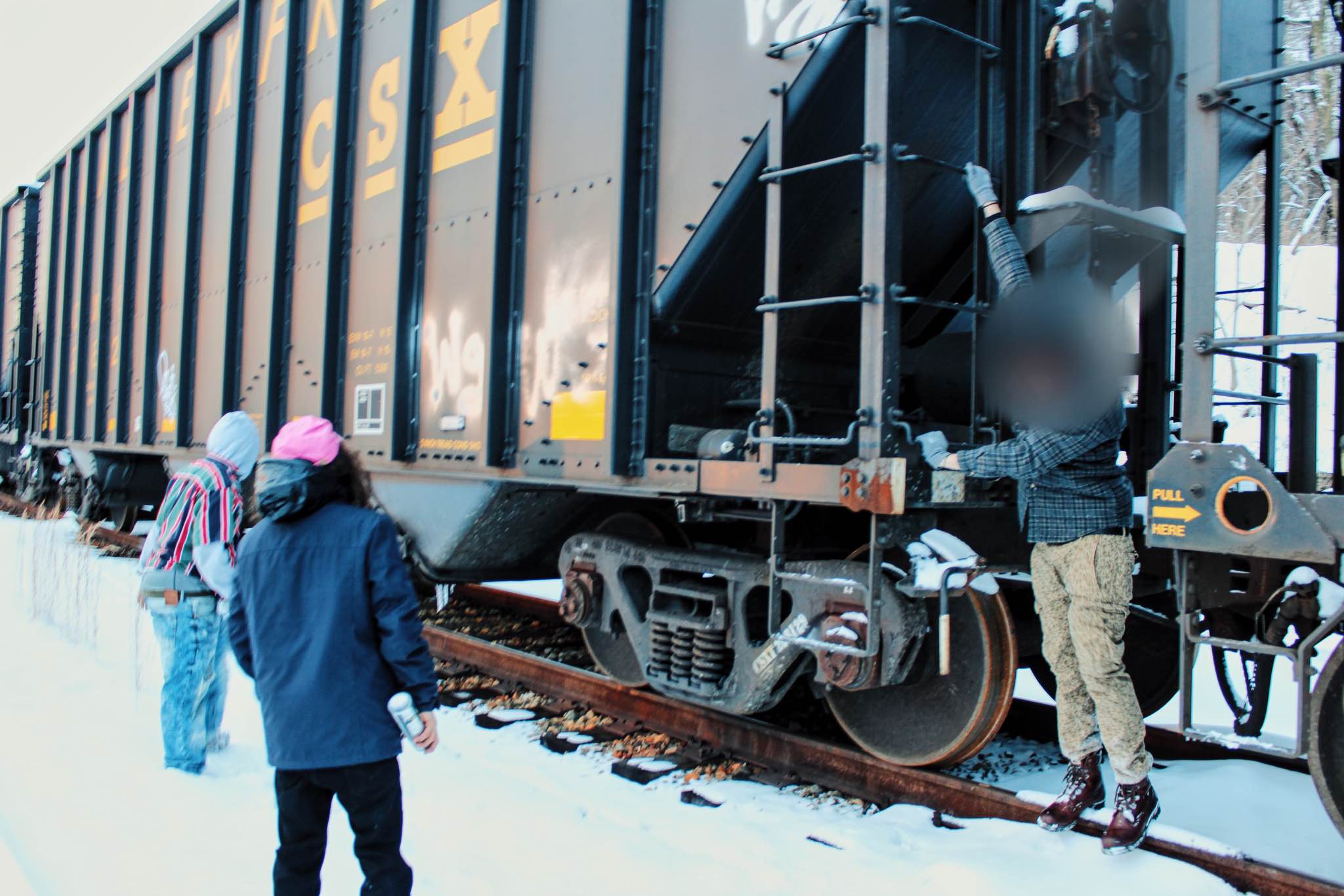
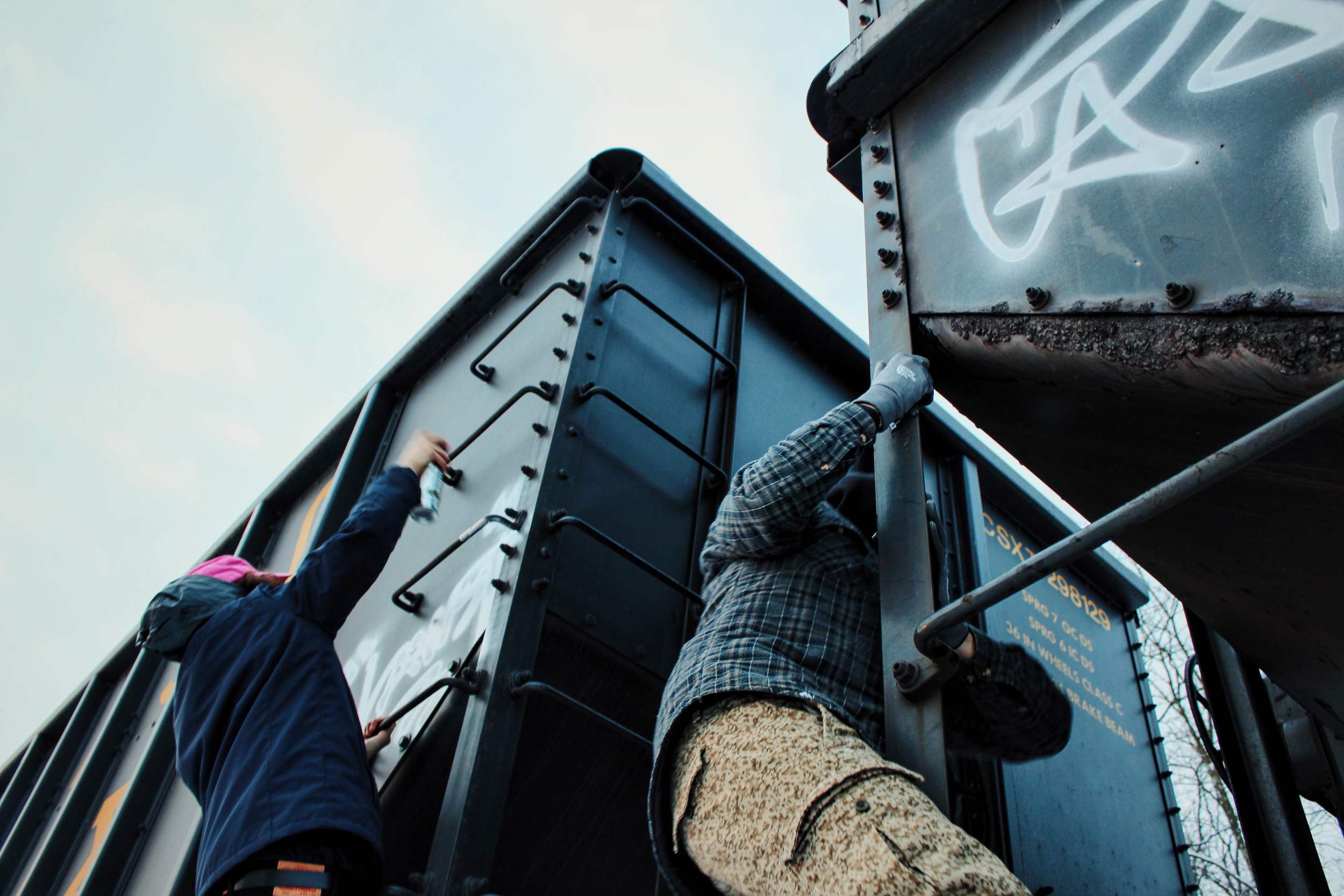
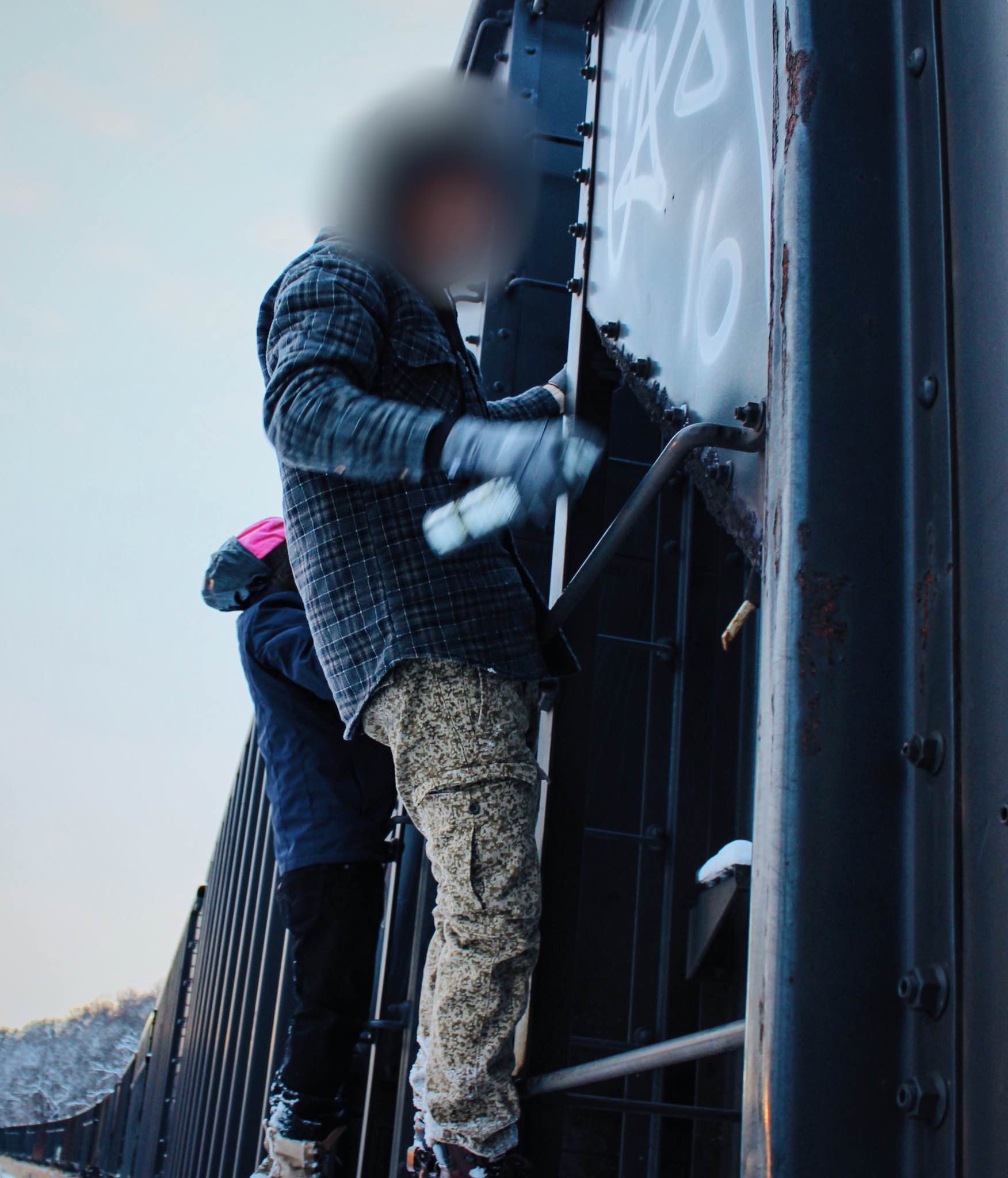
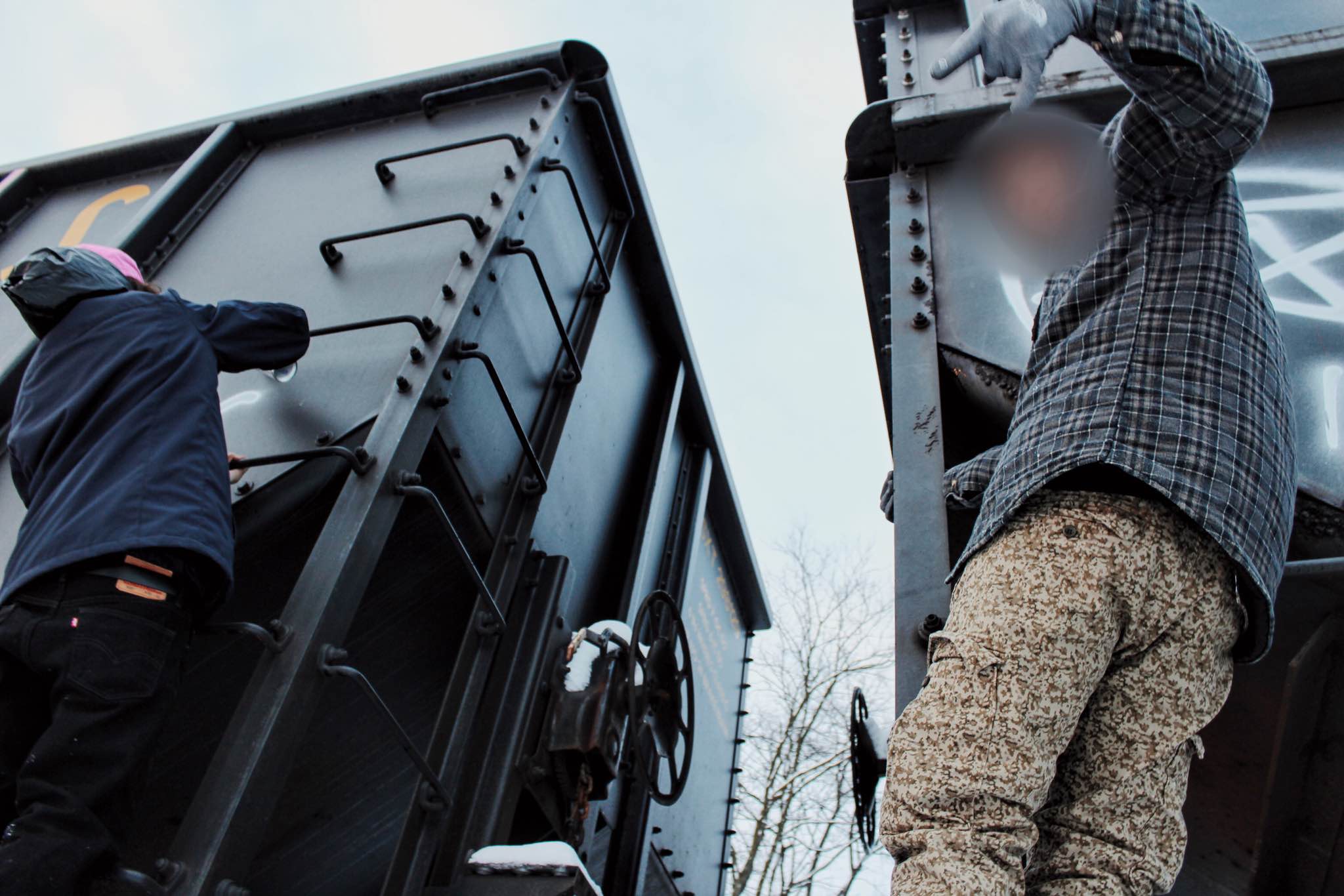
Nevertheless, COOP continues to spray graffiti across Pittsburgh. With people watching he will need to be more careful because his second arrest with higher fines, more community service hours, and possibly jail time is looming.
Visuals of COOP and Wreckaz Gang members playing in the snow on railcars are sprinkled throughout the article.



